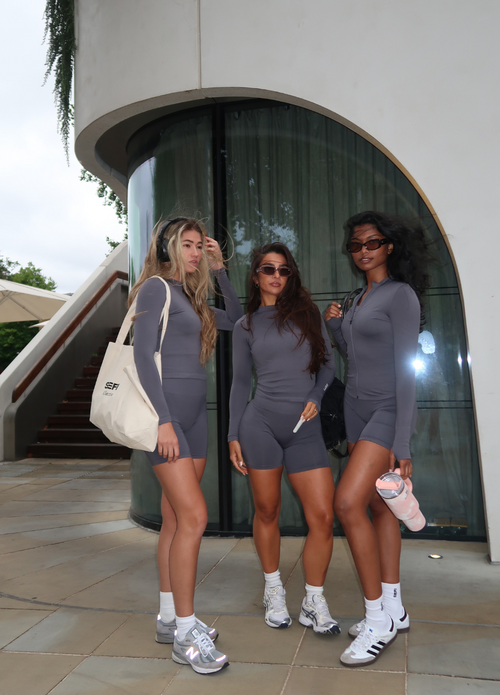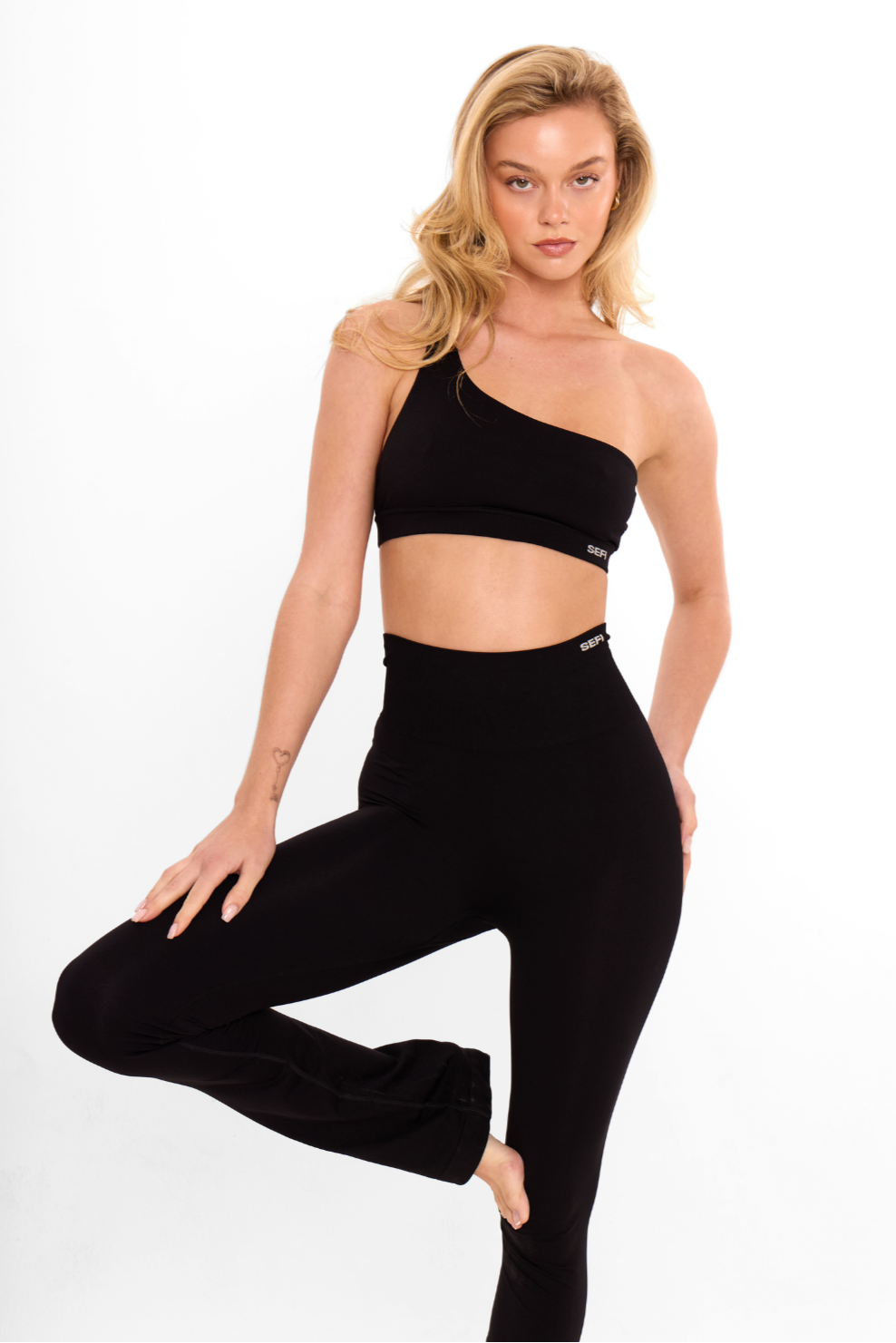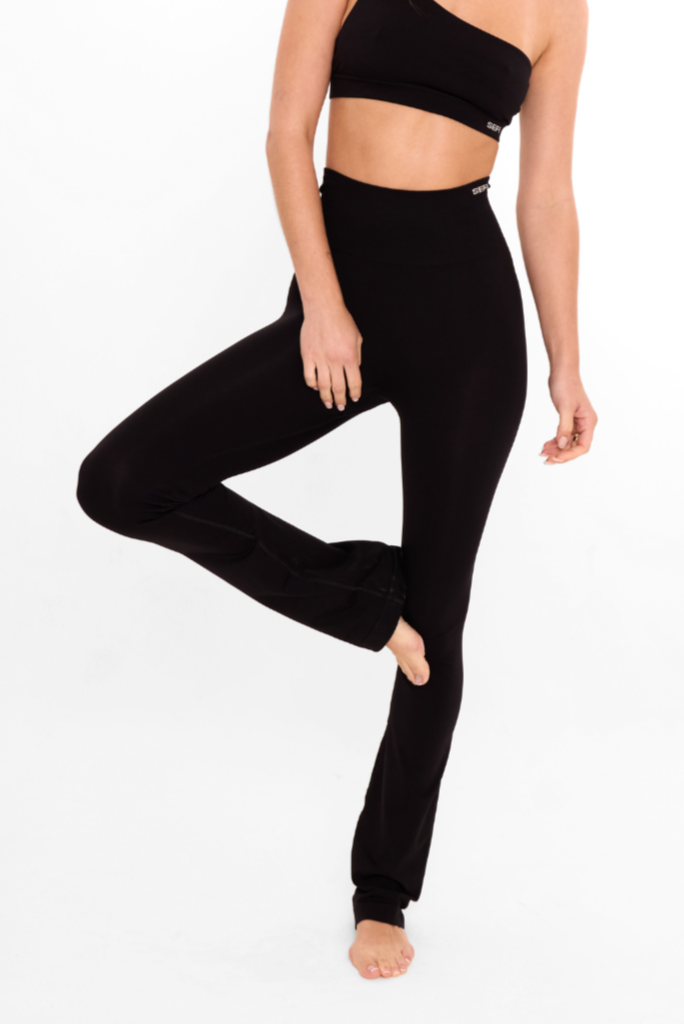Let's face it: We all love our activewear. Whether it's the athleisure wear we sport on casual Fridays or the activewear for women that's become a staple in our daily wardrobe, these pieces are more than just clothes. They're a lifestyle. But with great activewear comes great responsibility, especially when it comes to washing. If you've ever wondered how to wash activewear or athletic clothes without ruining their unique properties, you're in the right place.
Understanding the Fabric of Activewear

Not all fabrics are created equal. This is especially true when it comes to activewear. Many of us make the mistake of treating our athletic wear like any other piece of clothing. We throw them in the wash with our regular clothes, use the same detergents, and hope for the best. But here's the thing: activewear is unique.
Unlike cotton tee or denim jeans, activewear is often crafted from synthetic fabrics. These fabrics come with unique properties like stretch, moisture-wicking, and even waterproofing. Some of these properties are integrated into the fabric fibres, while others are applied as coatings. This means that washing workout clothes requires a different approach.
The Common Mistakes: How NOT to Wash Activewear

We get it. After an intense workout session, the first thing you want to do is get rid of that sweat and odour. And it's tempting to think that hot water and a vigorous wash cycle are the answers to how to wash athletic clothes. But this approach can do more harm than good.
1. The Perils of Hot Water:
Hot water might seem like the perfect solution to tackle "permastank" or that persistent activewear odour. However, hot water can distort your garment, damage its elasticity, and even affect its moisture-wicking power.
2. The Downside of Fabric Softeners and Dryer Sheets:
While these products promise softness, they can be the enemy of your activewear. They coat the fabric with a fatty layer, which affects the fabric's ability to wick away moisture. Instead of sweat vaporizing through the fabric's capillary channels, it gets trapped inside, reducing breathability.
Also Read: High-Impact Sports Bras
Right Way: How to Wash Activewear
Now that we've covered the don'ts, let's dive into the dos.
1. Separate and Conquer:
Always wash your activewear separately. This ensures that the synthetic fabrics get the care they need without being affected by other materials.
2. Cold or Lukewarm Water is Your Friend:
Instead of hot water, opt for cold or lukewarm water. This preserves the fabric's properties and ensures longevity.3. Ditch the Fabric Softener:
Remember, fabric softeners can damage the moisture-wicking and waterproofing technologies of your activewear. It's best to avoid them.
4. Gentle to Normal Cycle:
A gentle to normal wash cycle is ideal for activewear. It cleans without being too harsh on the fabric.
5. Drying Matters:
When it comes to drying, less is more. Lower temperatures or line drying can help maintain the integrity of the high-tech fabrics. Avoid dryer sheets and excessive heat.
6. The Magic of Enzyme-Driven Detergents:
Traditional detergents rely on hot water and agitation. But enzyme-driven detergents are different. They're optimised for cold water and don't need heavy agitation to remove stains. This means they're perfect for activewear, ensuring cleanliness without compromising fabric quality.
Also Read: Gym Clothing for Women
Organising and Storing Your Activewear
For optimal care of your high-quality activewear, it's recommended to fold them rather than hang them. Hanging can lead to the stretching of elastane fibres, resulting in permanent puckering. Some individuals prefer categorising their workout attire by type, such as bottoms, tops, and sports bras.
Others find it convenient to group matching sets together for quick and easy access. Whichever method you choose, always ensure the clothes are clean, especially if they're being stored for an extended period. While bugs and larvae might not be interested in synthetic fibres, they're certainly drawn to any residual organic stains.
Also Read: Best Workout Shorts for Women
Washing Frequency for Premium Activewear
It's essential to wash your workout attire after each use. Leaving sweaty clothes to dry at the base of your gym bag and reusing them only accumulates body soil and bacteria. If washing immediately isn't feasible, ensure they're air-dried before placing them in a laundry basket to avoid mould growth.
Cleaning high-end activewear demands special attention. Unlike the more forgiving cotton tees and sweatpants that can withstand hot washes and machine drying, activewear needs a thorough check and preparation beforehand. Always allocate sufficient time for air-drying these garments before their next use.
Also Read: Leggings vs Shorts for Workouts
High-Performance Activewear Washing Tips

1. Avoid Liquid Fabric Softeners:
Introducing liquid fabric softeners to your activewear wash can result in clothes that not only smell but also lose their shape. These softeners coat the fibres, trapping soil, bacteria, and odours. They also weaken the elasticity of the fabric.
2. Boost Odour Removal with Baking Soda:
For an enhanced odour-eliminating effect, incorporate 1/2 cup of baking soda into your washing routine when cleaning your gym attire.
3. Air-Drying Precautions:
Always keep your activewear away from direct heat sources like heaters or direct sunlight during the drying process. Excessive heat can compromise the fabric's integrity.
4. Pre-Dryer Odour Check:
Before considering machine drying, give your clothes a quick sniff. If any odour persists, it's best to rewash. Using a dryer can further embed the smell into the fabric.
Also Read: Best Sports Bras for Summer
In Conclusion
Activewear is much more than a fashion statement. It reflects our active lifestyles and the activities we pursue. By learning how to wash activewear, we can ensure that our favourite pieces stay fresh, functional, and stunning for a long time.
Activewear that is properly cared for and maintained not only lasts longer but also retains its high-performance features. You can keep your workout clothes in good condition by learning and implementing proper storage and washing practices. This will ensure that they remain fresh, functional, and ready for your next workout session.
Remember that how you treat your gear indicates how much importance you take on your exercise journey. So, the next time you're about to throw your workout clothes into the wash, remember these tips and give the activewear for women the care it deserves.
FAQs
Why shouldn't I hang my activewear?
Hanging can stretch elastane fibres in activewear, leading to permanent puckering. Folding preserves the garment's shape and performance qualities.
How often should I wash my workout clothes?
Always wash activewear after each use. Reusing sweaty clothes can accumulate bacteria and body soil, affecting the garment's longevity and hygiene.
Can I use fabric softeners for my activewear?
No. Fabric softeners coat activewear fibres, trapping bacteria and odours. They also weaken the fabric's elasticity, reducing its performance capabilities.
Why is baking soda recommended for washing activewear?
Baking soda enhances odour elimination, ensuring your workout clothes remain fresh and free from lingering sweat smells.
Is machine drying safe for activewear?
It's best to air-dry activewear. Machine drying, especially with heat, can degrade the fabric and set odours, compromising the garment's quality.



